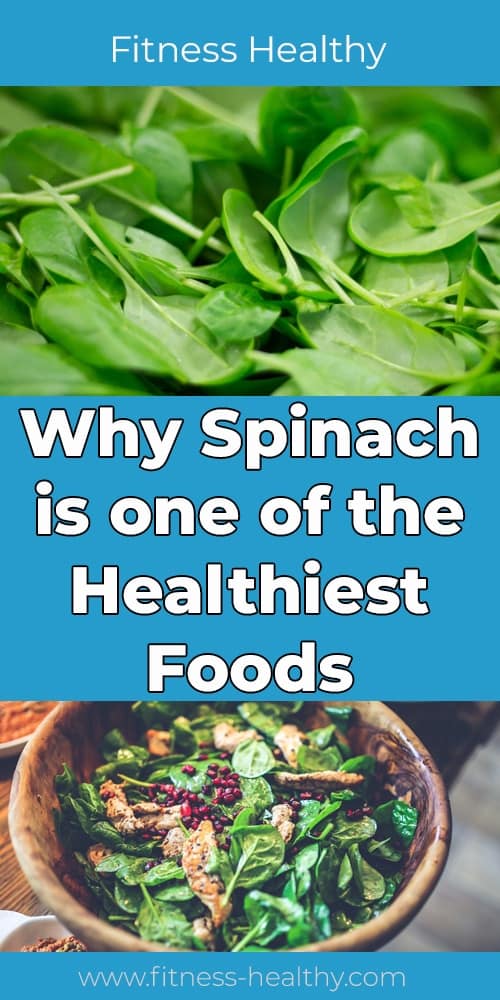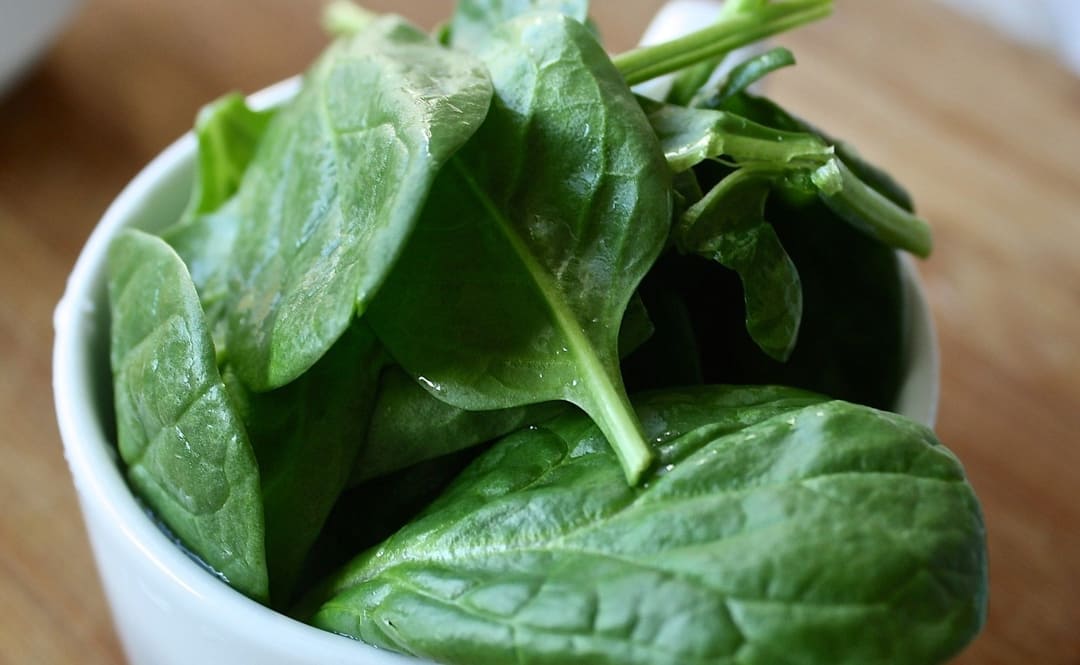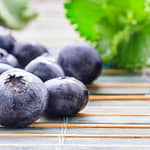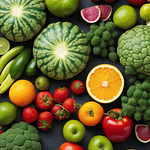Spinach is one of the healthiest foods on our tables all year long. It is available in various forms throughout the year. But its inner life is also convincing. Find out why spinach is so healthy, what you need to bear in mind when storing and processing it and why you should eat raw spinach more often.
Overview
Spinach is not only good for Popeye but for everybody
There is no one on earth who has made spinach as popular as he has: Popeye. The sympathetic sailor was brought to life in 1929 by the US-American illustrator Elzie Crisler Segar and since then has been delighting comic fans all over the world.
Popeye’s special trademark is that he dumps spinach into himself in cans, as it gives him supernatural powers. Is the spinach really as energizing and healthy as the comic depicts?
From wild spinach to crop
Unlike Popeye, spinach does not originally come from the USA, but from the Near and Middle East. It is rumored that the plant, which belongs to the foxtail plant family, was first cultivated from wild spinach in the Persian Empire.
From there the cultivated form – the so-called true spinach (Spinacia oleracea) – reached Spain in the Middle Ages through the Arabs. It quickly became one of the most popular vegetables and as a result made its way through the whole of Europe. Just how much spinach was appreciated is shown by the fact that it replaced the related orache, one of the oldest cultivated plants, as a foodstuff in Europe.
Spinach was a rockstar in Renaissance cuisine
If dishes contain spinach, they are often called “Florentine style”. This term is attributed to Caterina de’ Medici, who loved spinach more than anything else and is considered the mother of French cooking. When the native Florentine married the French King Henry II in 1547, i.e. in the Renaissance period, she brought along her chefs, who were able to prepare spinach in many different ways. She even decreed that spinach should be served with every meal.
Spinach as medicinal plant
Of course, spinach was once highly valued not only as a food product, but also – like almost all vegetables – as a medicinal plant and was used, for example, for digestive disorders. Recent studies confirm that traditional medicine is right. Researchers from the University of Nebraska-Lincoln took a close look at spinach in 2016 and found that it improves health beyond the usual measure due to its diverse nutrient composition.
More than 100 proven ingredients such as vitamins, minerals and secondary plant substances combine harmoniously with each other, developing antioxidant and anti-inflammatory power and counteract ailments such as hypoglycaemia, obesity, lipid metabolism disorders, depression and cancer. Mexican scientists came to the same conclusion in 2019 and described spinach as one of the best foods.
Nutritional value of spinach
Nutritional values per 100 g spinach:
91.8 g water
2.6 Fibres (645 mg water-soluble and 1,935 mg water-insoluble)
2.5 Protein
0.6 Carbohydrates (of which 0.5 g sugar: 0.13 g glucose and 0.11 g fructose)
0.3 Fat
Calories of spinach
Spinach, like any other vegetable, is very low in calories. There are no more than 17 kcal per 100 grams of vegetables, which can of course change quickly if you prepare the spinach with a good dash of cream, butter or a béchamel sauce and possibly serve it with bacon.
Spinach is a good source of iron
There are many myths around the topic of iron in spinach. This is due to the fact that the leafy vegetables were wrongly attested a supernaturally high iron content. The Swiss Gustav von Bunge, professor at the University of Basel, had correctly calculated the value at the end of the 19th century. However, his data did not refer to fresh spinach, but to dried spinach.
In the 20th century, a false transmission finally gave rise to the myth that 100 g of fresh spinach contains an extraordinary 35 mg of iron instead of 3.5 mg. Nevertheless, spinach is significantly richer in iron than other vegetables. After all, if you eat 100 g of the fresh vegetable, you can cover your daily requirements by up to 33 percent.
For comparison:
100 g tomatoes 0.6 mg iron
100 g broccoli 1.3 mg iron
100 g kale 1,9 mg iron
100 g carrots 2.1 mg iron
The iron myth has led to generations of children and adolescents being forced to eat the often unappreciated spinach. But if you force your children to eat something they don’t like at all, you achieve the opposite. Measures such as these lead to food being hated and avoided for the rest of their lives.
Oxalic acid is not so harmful
In several places you can read that spinach, despite its high iron content, is a poor source of iron and can even lead to iron deficiency. The oxalic acid, which binds the iron, is said to be responsible for this, making it difficult to absorb. According to studies, however, it can be assumed that eating oxalic acid in reasonable quantities does not pose a risk.
16 healthy women participated in a Swiss study. The test meals consisted of 100 g wheat bread rolls and either 150 g spinach with an oxalic acid content of 1.27 g or 150 g kale with an oxalic acid content of 0.01 g.
The scientists found that oxalic acid in plant foods does not inhibit iron absorption and that oxalic acid does not contribute to the reported inhibitory effect of spinach on iron absorption.
Best Sellers in Health & Household
Spinach is a great source of beta-carotene
Even today, many people are still convinced that spinach is only healthy because of its high iron content. Popeye’s preference for spinach is often attributed to this. But Popeye knew much more. Because the strong sailor literally says in a cartoon: “Spinach is full of vitamin A. An’ tha’s what make hoomans strong an’ helty!” So the clever Popeye knew very well that spinach is so healthy because of its very high content of beta-carotene, from which vitamin A is formed in the body.
However, beta-carotene is not only important as a precursor of vitamin A, but also as a radical scavenger. Free radicals are aggressive oxygen compounds that are constantly produced in the body – for example during metabolic processes, by UV radiation or toxins – and can damage cells and the genetic material (DNA). Due to its antioxidant power, beta-carotene is able to render free radicals harmless.
If you eat 100 g of fresh spinach, you are consuming more than twice the recommended daily dose of beta-carotene. From this amount of beta-carotene, 78 µg of vitamin A is produced in the body, so that the daily requirement of vitamin A can be covered by 87 percent. Vitamin A is among other things important for the eyes, contributes to the synthesis of testosterone and oestrogen and to the health of bones, cartilages and teeth.
For more health related articles have a look at our health category.
Want to know more about spinach? Health benefits and nutritional value of spinach
If you are looking for a diet program, here is our list:
The Smoothie Diet: 21 Day Rapid Weight Loss Program
Red Tea Detox – New Weight Loss For 2020!
Mediterranean Diet – The Official Diet Plan
14 Day Rapid Soup Diet – The Superman Of Keto For 2020








